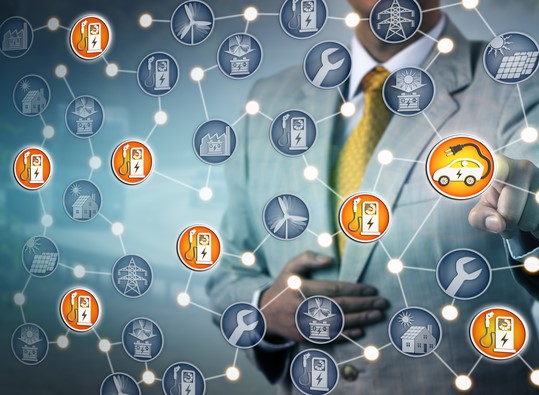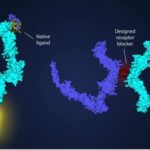
Please welcome Tarina Hawkins. This is her first contribution to 21st Century Tech Blog. She wrote me about a previous posting on this site entitled, “The Importance of Safe and Efficient Charging Infrastructure for Supporting a Low-Carbon Energy Transition.” She wanted to add to the subject with her topic today, how the transition to electric vehicles (EVs) depends on charging infrastructure being developed at a faster clip than what is happening currently and on the integration of EV technology advancements.
Tarina loves doing research and writing on a variety of topics. She prides herself in making complex concepts easy to understand. When not writing, you’ll probably find her enjoying the warm weather and taking long walks. And here in the Northern Hemisphere, the warm weather is coming.
An estimated 42% of polled respondents in a recent study by McKinsey & Company perceive charger availability as a problem should they choose to switch to an electric vehicle (EV). The same number of people also express concern about battery range. EVs account for 15-20% of global annual sales in the most recent statistics produced by the International Energy Agency (IEA). But battery issues and infrastructure are seen as impediments to even higher rates of adoption. The good news, however, is the constant improvements in battery technology is relieving range anxiety, improving charging speed, and reducing upfront EV costs. And integrating technologies built into EVs are making these vehicles even more attractive to buyers.
Improvements to charging technologies should convince more people to make the switch to green cars. These include:
Ultra-Fast Chargers
Before purchasing an EV, you should evaluate your driving needs to help you determine range requirements and then consider the charging capabilities of the vehicles you’re considering. One way to do this is to use credible ratings and review sites that rank the EV performance. These sites look at the size, price, and features of EVs in the market. You should see information like how fast certain models recharge. Most EVs on standard chargers can take hours to recharge. Compared to internal combustion engine (ICE) vehicles using gasoline or diesel which usually involves a two-minute stop at the gas pump, this is clearly an EV disadvantage.
That’s why the introduction of ultra-fast chargers is so important. They significantly reduce recharging time compared to standard chargers, an important factor when travelling a long distance where drivers need to quickly juice up their vehicles to continue on their way.
Nowadays, a 150-kilowatt rapid charging station can recharge an EV in 30 minutes or less. A 350-kilowatt ultra-rapid EV charger can reach 80% in 20 minutes. Faster charging speeds minimize wait times. An EV driver that is running multiple errands with frequent stops, may choose to top up their battery if EV charging stations are readily available. This is one way to address range anxiety but it can be inconvenient. That’s why an ultra-fast charging network is highly desirable. If you are looking for the fastest EV chargers on the market today include Lucid Air (350-Kilowatt) which can top up an EV in 15 minutes and the Tesla Supercharger (250-Kilowatt) which can do it in 20 minutes.
Wireless Charging
Also known as inductive charging, wireless charging for EVs works the same way as using a charging pad for a smartphone. Wireless charging pads embedded in a parking space can be connected to a power source. When the EV parks on the pad, its receiver coils align with the transmitter to transfer the charge. Charging efficiency varies depending on several factors such as alignment accuracy and efficiency of the charging system. The advantage of wireless charging is that it offers a user-friendly charging experience because there is no need to plug or unplug cables. The other attractiveness for wireless is ease of use.
Wireless charging is efficient and fast compared to charging using a plug. The majority of EV plugs provide an efficiency rating between 80 to 95%. WiTricity’s wireless charging systems reach 90 to 93%. They can also produce charging power of up to 20 Kilowatts which is a Level 2 charging speed. For clarity, the typical power output in Level 1 charging is 1 Kilowatt with the estimated charge time from empty to full between 40 to 50 hours. Level 2 ranges from 7 Kilowatts to 19 Kilowatts. Direct Current (DC) Fast Charging comes in at between 50 to 350 Kilowatts. These types of chargers are still few and far between with DC not expected to hit the marketplace anytime soon.
Vehicle-to-Everything (V2X) Integration
Beyond building a charging infrastructure to rival current gasoline and diesel pumps, EVs have capabilities that no ICE vehicle can duplicate. This is V2X integration which enables EVs to integrate into the larger environment and communicate with other vehicles, surrounding infrastructure, pedestrians and the electrical grid.
These different integrations go by their acronyms. V2V stands for vehicle-to-vehicle. V2I involves integration with surrounding infrastructure. V2P is integration with pedestrians, and V2G is integration with the grid.
V2V allows an EV to share power with another EV that is low on charge. It’s like jump-starting a dead battery using jumper cables from one ICE vehicle to another. Toyota, Nissan, Hyundai, Kia, and Volkswagen offer V2V integration with Tesla planning to have all models support this feature by 2025.
V2I allows EVs to communicate with the surrounding environment receiving real-time information on road conditions, traffic congestion, and potential hazards.
V2P is aimed at improving pedestrian safety and awareness by providing drivers with real-time information about pedestrians within the vehicle’s vicinity.
V2G allows an EV to send electricity back to the power grid to stabilize it during peak use periods and can even generate income for the EV owner. How is this done? EVs with V2G can charge during low-demand periods and release electricity back to the grid during peak periods. V2G can also allow an EV to power a home or business during power outages making the vehicle a reliable source of backup power in the event of an emergency.








